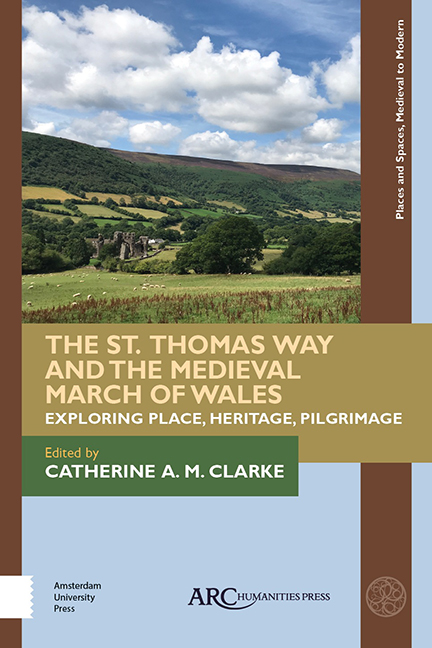Chapter 6 - Reflection on the St. Thomas Way
Published online by Cambridge University Press: 20 November 2020
Summary
THE CATHEDRAL IS approached on a regular basis by people with bright ideas for it! Exploring these has sometimes involved considerable work, and then come to nothing. One therefore becomes cautious about approaches, so I have to confess that when Professor Catherine Clarke appeared with a bright idea my colleagues and I probably adopted the usual defensive position, waiting to be convinced. This, however, has been one of the happy occasions when the bright idea and its promoter quickly convinced us that here was a project worth putting time and effort into.
Pilgrimage has become an increasingly strong element in the Cathedral's life. The creation of a shrine for St. Ethelbert and the restoration of the shrine of St. Thomas have intentionally opened up possibilities for pilgrimage in new ways. The St. Thomas Way project clearly linked into and strengthened that element of our ministry; by its timing, too, it dovetailed in a very happy way with nascent plans for the commemoration of the seven-hundredth anniversary of Thomas Cantilupe's canonization in 2020. In short, the St. Thomas Way project was a gift to the Cathedral.
It is a recognized feature of spiritual experiences and numinous places that they are heightened by careful management; architecture, art, music, movement, colour, and smell can all be employed to evoke a greater sense of presence or of experience or event. This is not about confecting something out of nothing, but about helping to realize the full potential of experiences and events. The shrine of St. Thomas, even in its restored condition, has needed help in order that it can truly be experienced as “a place of arrival.” The rigours of the Camino prepare pilgrims psychologically for the moment of arrival at the shrine of St. James in Compostela, where the magnificently dangerous Botafumeiro scythes across the basilica from transept to transept, filling the building with clouds of incense. While Hereford cannot as yet imitate Compostela in that regard, it does now have a recognized pilgrimage route which people can follow so that the moment of arrival at the shrine really can be the culmination of a journey of expectation. Already people are getting out of their cars in order to walk the route, and looking at maps to see how this can be achieved. Plans for 2020 include the creation of other pilgrim routes, more locally based.
- Type
- Chapter
- Information
- The St. Thomas Way and the Medieval March of WalesExploring Place, Heritage, Pilgrimage, pp. 123 - 124Publisher: Amsterdam University PressPrint publication year: 2020



